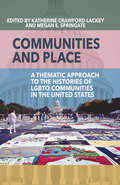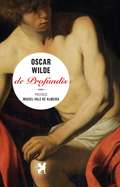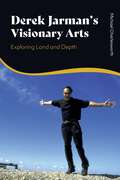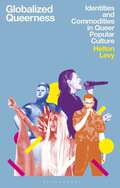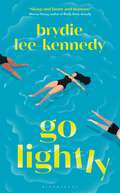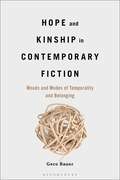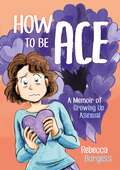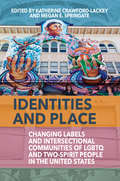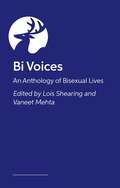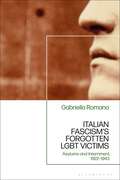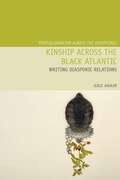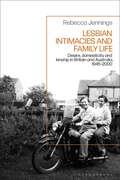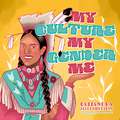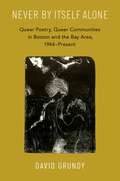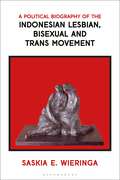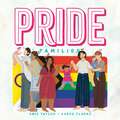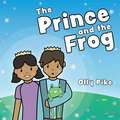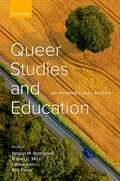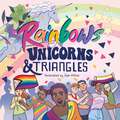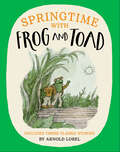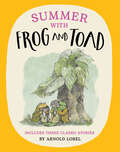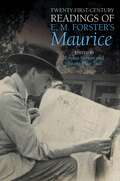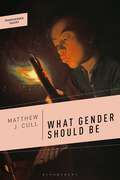- Table View
- List View
Communities and Place: A Thematic Approach to the Histories of LGBTQ Communities in the United States
by Katherine Crawford-Lackey Megan E. SpringateLesbian, gay, bisexual, transgender, and queer (LGBTQ) people have established gathering spaces to find acceptance, form social networks, and unify to resist oppression. Framing the emergence of queer enclaves in reference to place, this volume explores the physical and symbolic spaces of LGBTQ Americans. Authors provide an overview of the concept of “place” and its role in informing identity formation and community building. The book also includes interactive project prompts, providing opportunities to practically apply topics and theories discussed in the chapters.
Communities and Place: A Thematic Approach to the Histories of LGBTQ Communities in the United States
by Katherine Crawford-Lackey Megan E. SpringateLesbian, gay, bisexual, transgender, and queer (LGBTQ) people have established gathering spaces to find acceptance, form social networks, and unify to resist oppression. Framing the emergence of queer enclaves in reference to place, this volume explores the physical and symbolic spaces of LGBTQ Americans. Authors provide an overview of the concept of “place” and its role in informing identity formation and community building. The book also includes interactive project prompts, providing opportunities to practically apply topics and theories discussed in the chapters.
De Profundis
by Rita Correia Isabel Robalinho Miguel Vale de Almeida Oscar WildeNo Verão de 1891, Wilde é apresentado ao jovem Lord Alfred Douglas, familiarmente conhecido como Bosie, estudante de Oxford com aspirações literárias, filho do Marquês de Queensberry. Inicia-se então a tempestuosa amizade que culminará no julgamento e condenação de Oscar Wilde a dois anos de trabalhos forçados, em 1895. A longa carta dirigida a Lord Alfred Douglas foi escrita durante os últimos meses que Wilde passou na prisão de Reading. Esta carta não foi enviada a Bosie da prisão, mas confiada a Robert Ross, amigo de Wilde, várias vezes mencionado ao longo do texto, que dela mandou fazer duas cópias, de acordo com a vontade de Oscar Wilde. Uma das cópias teria como destinatário Lord Alfred Douglas, que sempre negou tê-la recebido, a segunda foi deixada em testamento ao filho de Wilde, Vyvyan Holland.
Derek Jarman’s Visionary Arts: Exploring Land and Depth
by Michael CharlesworthDerek Jarman's place in the history of film is assured by virtue of his vibrant, defiant films that experiment with the very process of film-making and create new forms. His paintings, their excitements and their profundity, are less well known. Michael Charlesworth sheds light on the varied ramifications of Jarman's artistic practice from his years at Prospect Cottage, Dungeness, and provides the first book-length study of his interest in depth psychology. He draws on Jarman's paintings, especially his landscapes from the 1960s and 70s, his multiple series such as 'black' and 'broken glass', GBH, Queer and Evil Queen, and his last Ecstatic Landscapes (1991-3). He also showcases Jarman's excellence as a writer with respect to his memoir, Kicking the Pricks. In a novel approach to Jarman's cinema, selecting films such as Journey to Avebury (1973), Caravaggio (1986), The Garden (1990) and Blue (1993), Charlesworth emphasizes themes and artistry rather than narrative. Exploring the ways in which Jungian and post-Jungian psychology were absorbed into Jarman's varied works, Derek Jarman's Visionary Arts provides a fresh perspective on his painting, film and writing. It celebrates him as one of the major British artists of the late 20th century, engaging with current debates about queer sexualities, environmentalism and climate catastrophe.
Globalized Queerness: Identities and Commodities in Queer Popular Culture (Library of Gender and Popular Culture)
by Helton LevyHas a global queer popular culture emerged at the expense of local queer artists? In this book, Helton Levy argues that global queer culture is indebted to specific, local references that artists carry from their early experiences in life, which then become homogenized by contemporary media markets. The assumption that queer publics live and consume only through a global set of references, including gay parades and rainbow flags, for example, erases many personal complexities.Levy revisits media characters that have caught the attention of the broader public – such as Calamity Jane (1953), the Daffyd Thomas character from the BBC comedy Little Britain (2003-2007), Brazilian drag queen Pabblo Vittar, French singer Christine and the Queens, and the Italian-Egyptian rapper Mahmood – and argues that they have gradually blended in the public's perception. This has often obscured the individual struggles faced by these characters, such as immigration, homophobia, poverty and societal exclusion. Levy also questions what happens when global media flows take queer culture to regions wherein the notion of LGBTQ+ rights are not entirely acceptable. Utilizing insights from media reports published across the world's ten biggest media markets, Levy argues that there are a series of conditions which artists and cultural actors negotiate once they achieve any kind of success in mainstream media, while local queer references remain unseen in the wider media world. For that reason, he argues for stronger incentives for communities to accept and acknowledge the work of queer people before and after commoditization.
Go Lightly: The funny, sharp and heartfelt bisexual love story
by Brydie Lee-Kennedy'Sharp and funny and humane ... Brydie skewers everyone equally, but always with empathy, warmth and wit.' Monica Heisey, author of Really Good, Actually'A novel that really nails the chaos, panic and joy of being young' Daisy Buchanan, author of Insatiable'Captures twentysomething chaos ... Very funny' THE TIMESA funny and tender twenty-first century story of family, friendship, love – and how getting it wrong is sometimes the only way to get it right.WHO IS ADA?With Sadie she's an Aussie girl in London, a performer, a ball of creativity and a lover of food.With Stuart she's funny and quirky, capable of finding romance in a dinner of crisps on a cold harbour and long train rides.With her family she's the joker, the peacekeeper, the entertainer.But she doesn't have to choose which version of herself to be… right?Ada's answer to most questions is: yes. Every night is an opportunity to be thrilled and every morning a chance to recount it to her friends, so when she falls for Sadie and Stuart at the same time, she sees no reason not to pursue them both.But as the realities of modern life begin to catch up with her, and everyone wants Ada to define herself in relation to them, she feels the weight of the questions: which version of yourself is most true? And do other people enhance your best self, or distort it?Go Lightly is a tribute to party girls who'd rather enjoy the present than fear the future or regret the past, and a love letter to the community you find when you're far from home.'Funny, perceptive and effortlessly engaging … I loved this novel' Lily Lindon, author of Double Booked
Hope and Kinship in Contemporary Fiction: Moods and Modes of Temporality and Belonging
by Dr. Gero BauerExplores the emphasis that contemporary novels, films and television series place on the present, arguing that hope emerges from the potentiality of the here and now, rather than the future, and as intimately entangled with negotiations of structures of belonging.Taking its cue from an understanding of hope as connoting an organizing temporality, one which is often presumed to be projecting into a future, Hope and Kinship in Contemporary Fiction challenges this understanding, arguing that hope emerges in practices of relationality in the present, disentangling hope from a necessary correlation with futurity. Through close readings of contemporary works, including The Road, The Walking Dead, Cloud Atlas, Sense8, The People in the Trees and A Little Life, Gero Bauer investigates how these texts explore structures of kinship as creative and affective practices of belonging and care that claim spaces beyond the heterosexual, reproductive nuclear family. In this context, fictional figurations of the child – often considered the bearer of the future – are of particular interest. Through these interventions into definitions of and reflections on fictional manifestations of hope and kinship, Bauer's analyses intersect with queer theory, new materialism and postcritical approaches to literature and cultural studies, moving towards counterintuitively hopeful readings of the present moment.
How to Be Ace: A Memoir of Growing Up Asexual
by Rebecca BurgessPRISM AWARDS FINALIST 2021GREAT GRAPHIC NOVELS FOR TEENS - YOUNG ADULT LIBRARY SERVICES ASSOCIATION (YALSA) 2022"When I was in school, everyone got to a certain age where they became interested in talking about only one thing: boys, girls and sex. Me though? I was only interested in comics."Growing up, Rebecca assumes sex is just a scary new thing they will 'grow into' as they get older, but when they leave school, start working and do grow up, they start to wonder why they don't want to have sex with other people.In this brave, hilarious and empowering graphic memoir, we follow Rebecca as they navigate a culture obsessed with sex - from being bullied at school and trying to fit in with friends, to forcing themselves into relationships and experiencing anxiety and OCD - before coming to understand and embrace their asexual identity.Giving unparalleled insight into asexuality and asexual relationships, How To Be Ace shows the importance of learning to be happy and proud of who you are.
Identities and Place: Changing Labels and Intersectional Communities of LGBTQ and Two-Spirit People in the United States
by Katherine Crawford-Lackey Megan E. SpringateWith a focus on historic sites, this volume explores the recent history of non- heteronormative Americans from the early twentieth century onward and the places associated with these communities. Authors explore how queer identities are connected with specific places: places where people gather, socialize, protest, mourn, and celebrate. The focus is deeper look at how sexually variant and gender non-conforming Americans constructed identity, created communities, and fought to have rights recognized by the government. Each chapter is accompanied by prompts and activities that invite readers to think critically and immerse themselves in the subject matter while working collaboratively with others.
It Ain't Over Til the Bisexual Speaks: An Anthology of Bisexual Voices
by Various'Bisexuality allows for so many ways to desire and to express that desire. Plurality is at the heart of bisexuality' The bisexual experience is, by necessity, incredibly diverse - we are likely to be attracted to different genders, form part of multiple marginalised groups, and be perceived (depending on the gender of our partner) in wildly different ways..This anthology is a radical and ambitious attempt to capture the incredible multiplicity of bisexual identities. With essays that unpack the intersectionality and conflict of bisexuality with history, language, sexual violence, class identity, religion, polyamory, gender critical ideology, fatness, trans activism, the asylum system, literature and anarchy - this collection of bi voices demands to be heard..With contributions from Shiri Eisner, Hafsa Qureshi, Zachary Zane, Heron Greenesmith, and many, many more...
Italian Fascism’s Forgotten LGBT Victims: Asylums and Internment, 1922 – 1943
by Dr Gabriella RomanoThis book examines the question of the repression of LGBT people through psychiatry during the fascist regime in Italy, a subject that has not been investigated until now. It draws together the substantial archival record of patients, doctors and fascist authorities to reconstruct intricate behind-the-scenes dialogue, and to document one of the ways in which the regime repressed LGBT lives in this period.Italian Fascism's Forgotten LGBT Victims focusses on three different psychiatric hospitals in three parts of the country - Rome, Florence and the small Calabrian town of Girifalco, which had different attitudes and therapeutic approaches. Archive research results are contextualised within the psychiatric theory of the time, highlighting the existing discrepancies between theory and daily routine practice of mental health institutions in Italy during the regime.Using a variety of sources, Gabriella Romano expands current knowledge of the history of Italian psychiatry, and, in doing so, she also touches a number of crucial issues of medical history, history of Fascism and queer history. Most importantly, this original and well-documented study sheds light on the life stories of ordinary LGBT individuals and their families under the fascist regime, a topic that is still mostly unexplored.
Kinship Across the Black Atlantic: Writing Diasporic Relations (Postcolonialism Across the Disciplines #23)
by Gigi AdairAn Open Access edition of this book is available on the Liverpool University Press website and through Knowledge Unlatched. This book considers the meaning of kinship across black Atlantic diasporas in the Caribbean, Western Europe and North America via readings of six contemporary novels. It draws upon and combines insights from postcolonial studies, queer theory and black Atlantic diaspora studies in novel ways to examine the ways in which contemporary writers engage with the legacy of anthropological discourses of kinship, interrogate the connections between kinship and historiography, and imagine new forms of diasporic relationality and subjectivity. The novels considered here offer sustained meditations on the meaning of kinship and its role in diasporic cultures and communities; they represent diasporic kinship in the context and crosscurrents of both historical and contemporary forces, such as slavery, colonialism, migration, political struggles and artistic creation. They show how displacement and migration require and generate new forms and understandings of kinship, and how kinship may be used as an instrument of both political oppression and resistance. Finally, they demonstrate the importance of literature in imagining possibilities for alternative forms of relationality and in finding a language to express the meaning of those relations. This book thus suggests that an analysis of discourses and practices of kinship is essential to understanding diasporic modernity at the turn of the twenty-first century.
Lesbian Intimacies and Family Life: Desire, domesticity and kinship in Britain and Australia, 1945-2000
by Rebecca JenningsFocusing on patterns of intimacy, this book traces the historical roots of parenting practices and familial patterns constructed by lesbians and same-sex attracted women living in Britain and Australia between 1945 and 2000. It foregrounds women's unique lived experiences, as they expressed desire, fell in love, and created families against the backdrop of changing cultural, legal, and medical attitudes to female same-sex desire in the late 20th century.Including almost 100 original oral history interviews conducted by the author, Lesbian Intimacies and Family Life reveals the subjective histories of lesbian intimacy during the period, both highlighting the huge variety in women's experiences, and tracing shifting patterns of relationship and family formation. Combined with analysis of representations of lesbian intimacy in literature, press articles, medical texts, and archival material, the book demonstrates the ways in which changing political and cultural concepts of sexuality impacted on individual and collective attitudes.With a unique transnational perspective, Jennings uncovers how feminist and lesbian networks between Britain and Australia promoted knowledge sharing and helped foster change in the familial practices of each country – such as through the adoption of reproductive technologies and alternate routes into motherhood. Through considering the rise of divorce and challenges to traditional marriage practices in the period, this book highlights how lesbian relationships provided alternative models of interpersonal relations, impacting on broader patterns of sexuality, and helping redefine notions of the family in the modern era.
My Culture, My Gender, Me
by Cassandra Jules CorriganGender diversity knows no borders...Exploring identities that span the Indigenous Two Spirit people, the hijras of the Indian subcontinent, the mahu people of Hawaii, the female husbands of the Igbo tribe and many more, Cassandra Corrigan beautifully demonstrates that gender identities beyond the binary are a world-wide phenomenon. This lovingly illustrated guide is an important testament that genders other than male and female have always existed - around the globe - and comes with additional materials to help children uncover the gender identities from their own cultures. Perfect for parents, children, educators and professionals who work with gender-diverse children.
Never By Itself Alone: Queer Poetry, Queer Communities in Boston and the Bay Area, 1944?Present
by David GrundyProviding an unprecedented exploration of key moments in queer literary history, Never By Itself Alone changes our sense of both the American literary and political landscapes from the late 1940s through the 21st century. Grundy presents the first comprehensive history of post-war queer writing in Boston and San Francisco, intertwining analysis of lesbian, gay, and queer writing, and insisting on the link between activism and literature. The book centers a host of underrepresented writers, especially writers of color and those with gender non-conforming identities, and challenges the Stonewall exceptionalism of queer historiography. Starting with Robert Duncan's 1944 essay, 'The Homosexual in Society', one of the first significant public defenses of homosexuality in the US, Grundy takes the reader through pioneering works by queer voices of the era, including Adrian Stanford's Black and Queer, the first published book by an out, Black gay poet in the US; the Boston collective Fag Rag and their radical reconsideration of family, private property and the State; the Combahee River Collective, whose Black Feminist analysis drew together race, class, and sexuality; the anthology This Bridge Called My Back, in which women of color spoke truth to power, together; and New Narrative writing, which audaciously mixed Marxism, porn and gossip while uniting against the New Right. Linking these works to the context which produced them, Grundy uncovers the communities formed around activism and small press publishing during this era and elevates neglected voices to narrate a history that before now has never been told in its entirety. Drawing on extensive archival research, Never By Itself Alone is a rigorous and unmatched work of both literary criticism and queer scholarship which underscores the vital importance of radical accounts of race, class, and gender in any queer studies worthy of the name.
Œuvres complètes de Voltaire: Corpus des notes marginales de Voltaire 4: Gachet d'Artigny-Koran (Œuvres complètes de Voltaire (Complete Works of Voltaire) #139)
by VoltairePart of the complete works of the French philosopher, historian and social reformer, Voltaire. One in a 13-volume set which reprints Voltaire's marginal notes in the alphabetical sequence of the books in his library. An indispensable scholarly tool for students and scholars of the 18th-century Enlightenment with research interests in Voltaire.
A Political Biography of the Indonesian Lesbian, Bisexual and Trans Movement
by Saskia WieringaHere, the history of the Indonesian LBT movement is charted, from invisibility, to visibility and now as it moves again into hiding. In the early 1980s, during the oppressive military dictatorship called the New Order in Indonesia, the first organizations of Lesbian, Bisexual and Trans persons were established. They were short-lived, but prepared the ground for a more comprehensive LBT rights movement after the democratic opening of society in 1998. From 2000 to 2015 the visibility of the movement grew, until a vicious state-sponsored backlash set in, driven by majoritarian, fundamentalist Islamist groups. Saskia Wieringa tracks the movement's progress and explores the persistence of the butch/femme model of relationships; the proliferations of identities; family violence and conversion therapy; religion; and the anti-LGBT campaign. In its insistence on the local dynamics of this movement, the book aims to debunk the idea that homosexuality is a Western import. Chapters deal with the many religious and secular phenomena that are linked with gender diversity and same-sex relations traditionally, and the erasure of many of these traditions is explained using the concept of postcolonial amnesia. A Political Biography of the Indonesian Lesbian, Bisexual and Trans Movement is also a contribution to the growing literature on decolonization studies, pointing out that its dynamics, its historical course and its present condition, different as they are from the dominant Western view on a global LGBT movement, needs to be considered as valuable as accounts of Western LGBT histories are.
Pride Families
by Amie TaylorFamilies come in all different shapes and sizes, and each one is perfect!Come and celebrate what it means to be a PRIDE FAMILY in this beautifully illustrated book written by LGBTQIA+ author, Amie Taylor and Illustrated by Kaspa Clarke.LGBTQIA+ families come in all the colours of the rainbow. Perhaps you belong to a Pride family, or maybe you have a friend who belongs to a Pride Family?This educational children's book explores what these families look like with a focus on trans, non-binary, gay, lesbian and polyamorous family set ups. Covering themes such as, pregnancy, donor conception and surrogacy alongside a guide for adults that helps explain terminology, this book is an invaluable resource for sharing and celebrating what it means to be a Pride family.
The Prince and the Frog: A Story to Help Children Learn about Same-Sex Relationships
by Olly PikeOne day, Oskar and his sister Caroline meet a prince who was turned into a frog by an evil wizard. Only true love's kiss can break the spell - both Caroline and Oskar want to help, but which of them will be the frog prince's true love? This brightly illustrated, heart-warming take on a classic fairytale teaches children about same-sex relationships and attraction. Exploring what it means to be in a healthy, loving relationship, it encourages children to listen to others, be kind, and embrace diversity and equality. Ideal for children aged 3-7.
Queer Studies and Education: An International Reader
Queer Studies and Education: An International Reader explores how the category queer, as a critical stance or set of perspectives, contributes to opportunities individually and collectively for advancing queer social justice within the context and concerns of schooling and education. The collection takes up this general goal by presenting a cross-section of international perspectives on queer studies in education to demonstrate commonalities, differences, uncertainties, or pluralities across a diverse range of national contexts and topics, drawing a heightened awareness of heterodominance and heteropatriarchy, and to conceptualize non-normative and non-essentialist imaginings for more inclusive educational environments. Collectively, the chapters critically engage with heteronormativity and normativity more generally as a political spectrum, over a broad range of formal and informal sites of education, and against a backdrop of critiques of liberalism and neoliberalism as the frameworks through which "achievable" social change and belonging are fostered, particularly within educational settings. Taken together, the chapters assembled in Queer Studies and Education invite researchers, scholars, educators, activists, and other cultural workers to examine the multiplicity of contemporary (international) work in queer studies and education with readers' interpretations of queer's deployment across the chapters forming the compass for which to arrive at fresh insights and forms of queer critical praxis.
Rainbows, Unicorns, and Triangles: Queer Symbols Throughout History
by Jessica Kingsley PublishersIn the past, being different has often been dangerous, and people couldn't always be open about how they wanted to dress, what gender they wanted to be, and who they loved...Within these pages, you'll learn about how LGBTQIA2S+ people have used signs and symbols throughout history to communicate with each other, create safe spaces, and celebrate who they are!You'll recognise the rainbow flags of Pride Month, but what about the Labrys, the Lambda or the Lavender Rhino? This beautifully illustrated guide takes you on a journey through everything from the green carnations of Oscar Wilde and the violets of Sappho to the black rings of asexuality and the reclaimed pink triangles of persecution. A wonderful guide for children 5+ to the visual worlds of queer life.
Springtime with Frog and Toad
by Arnold LobelFrog and Toad stories have delighted both children and adults for more than fifty years, celebrating friendship and life in the most joyful and heart-warming way. This charming collection, which brings together three springtime stories, is the perfect seasonal gift for children.
Summer with Frog and Toad
by Arnold LobelFrog and Toad stories have delighted both children and adults for more than fifty years, celebrating friendship and life in the most joyful and heart-warming way. This charming collection, which brings together three summer stories, is the perfect seasonal gift for children.
Twenty-First-Century Readings of E. M. Forster's 'Maurice' (Liverpool English Texts and Studies #83)
This is the first book-length study of Forster’s posthumously-published novel. Nine essays focus exclusively on Maurice and its dynamic afterlives in literature, film and new media during the twentieth and twenty-first centuries. Begun in 1913 and revised over almost fifty years, Maurice became a defining text in Forster’s work and a canonical example of queer fiction. Yet the critical tendency to read Maurice primarily as a ‘revelation’ of Forster’s homosexuality has obscured important biographical, political and aesthetic contexts for this novel. This collection places Maurice among early twentieth-century debates about politics, philosophy, religion, gender, Aestheticism and allegory. Essays explore how the novel interacts with literary predecessors and contemporaries including John Bunyan, Oscar Wilde, Havelock Ellis and Edward Carpenter, and how it was shaped by personal relationships such as Forster’s friendship with Florence Barger. They close-read the textual variants of Forster’s manuscripts and examine the novel’s genesis and revisions. They consider the volatility of its reception, analysing how it galvanizes subsequent generations of writers and artists including Christopher Isherwood, Alan Hollinghurst, Damon Galgut, James Ivory and twenty-first-century online fanfiction writers. What emerges from the volume is the complexity of the novel, as a text and as a cultural phenomenon.
What Gender Should Be (Transgender Theory)
by Matthew J. CullWhat is gender? More importantly, what should gender look like in the 21st century? This book brings together philosophy with insights from feminist and transgender theory to argue for a position called 'ameliorative pluralism' about gender: that there should be more than two genders, and that each gender term should have multiple meanings. What Gender Should Be develops an explicitly political version of conceptual engineering (the modification of our representational devices in light of our purposes) based on the work of Otto Neurath and Audre Lorde to examine and critique existing theories of gender. It further produces novel and powerful arguments against those traditions of thinking about gender that arose after the 1980s – family resemblance theories, Butlerian performativity, deflationism, scepticism, and nihilism about gender – developing each tradition in detail before suggesting that each is insufficient for thinking about and doing justice to contemporary transgender identities and politics. Instead, Matthew Cull argues that we should be pluralists about gender, developing and arguing for a position that more apt for contemporary transgender and feminist activism. The 21st century requires a new way of thinking about gender. What Gender Should Be sets out to provide it.
